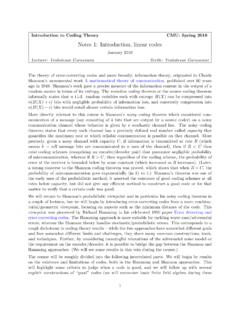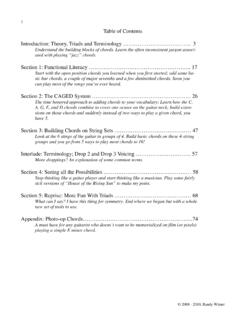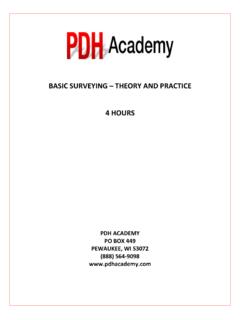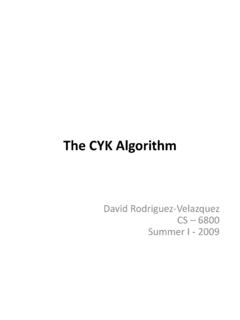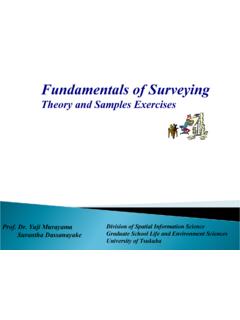Transcription of Theory of Music Workbook Samples - Trinity College …
1 Theory of Music Workbook Samplesfor Trinity College London written examinations Grades 1 8 Trinity College London Grade 5 Theory is fully accepted by all leading examination boards as a prerequisite to practical Music examinations Grades 6 8, where this is i n i ty Co l l e g e L o n d o n is committed to the teaching of Music Theory as a vital component in the development of well-rounded musicians. The Theory syllabus and supporting workbooks are the result of several years development and consultation with Music teachers, professors, examiners, language specialists and students from around the to make the essential concepts of Music Theory straightforward and approachable, the workbooks are: a clear introduction to all the vital basics of Music Theory pupil-focused and creative in approach ideal preparation for GCSE or equivalent books encourage students to see the relevance of Theory to themselves as musicians, with a greater emphasis on composition, Music analysis and clarity and accuracy in writing examples are used to demonstrate how the tasks in the books should be completed, and information boxes assist students in their study between lessons without the need for supplementary ensure that the books are easy to use, the layout has been kept deliberately uncluttered with a clear typeface, and the language is straightforward without being can be used by candidates of any age at any level to provide a clear, integrated.
2 Focused and relevant way into the study of Music booklet contains sample lessons from the Theory of Music Workbooks Grades 1, 3, 5, 6 and syllabus can be downloaded at College London is an awarding body recognised by the Office of the Qualifications and Examinations Regulator in England, as well as Welsh Assembly Government and the Northern Ireland Council for Curriculum, Examinations and Assessment respectively. Trinity s qualifications are accredited by these authorities within the National Qualifications Framework. Various arrangements are in place with governmental education authorities you know?Grouping notes and beaming quavers makes Music easy to tip!Composers sometimes break the official rules (you will see examples of this in the Music you learn), but you must follow the rules for your a composer writes two quavers to be played in one crotchet beat they are usually grouped together with a thick line called a beam.
3 Joining up quavers like this is called beaming: When a composer writes four quavers to be played in two next-door crotchet beats, they are usually beamed together, for example: 1 Fill the coloured boxes with correctly beamed quavers to complete the Did you know?In 34 time you can use or though is better. 1 Grouping notes and beaming quavers (( Grade 1 OstinatoAn ostinato is a pattern of notes (written in a certain rhythm) that repeats over and over again in a piece. The pattern can be short (just a few notes) or long. Ostinati are often used to accompany tunes and appear in lots of rap and other kinds of pop Music . 1 Look at the following ostinati and bracket () each repeat of the pattern. 2 Here are some ostinati. Write two more repeats of each Did you know?Ostinati often include you know?Ostinati is the plural of 1 Write a G in the last bar to agree with the Write a C in the last bar to agree with the Write a G in the last bar to agree with the a rest in the last bar to agree with the up-bow signs above each anacrusis in tasks 1 is the word that describes the note or notes of a piece that a composer often writes before the first full bar.))
4 These are often called the up-beat (or up-beats if there is more than one note).Here is an example of a song that starts with an anacrusis:Look at the coloured boxes above. If you add together the first note (a quaver anacrusis) and the last note (a dotted crotchet) they make a full 24 bar. Notice that the first repeat mark in this piece is put after the anacrusis so that there are no spare beats left you know? string players using a bow often use an up-bow () for a single up-beat. This means that a down-bow () occurs on the first beat of the bar and the weight of the hand naturally strengthens its sound. Ask a string player to show you how this you know?Bar 1 of any piece is always numbered as the first full bar of Music , although it is not usually written in as it is 3 Anacrusis (Grade 3) 1 Write a tune for violin using the first five degrees of the scale of E minor to the given rhythm.
5 Use a key signature and finish on the a tune for flute using the notes of the tonic triad in A minor to the given rhythm. Use a key signature and finish on the a tune for bassoon using the first five degrees of the scale of D minor to the given rhythm. Use a key signature and finish on the a tune for cello using the notes of the tonic triad in F major to the given rhythm. Use a key signature and finish on the at the tunes you have written and add some musical words and symbols that you know. Also see page 51 for those for Grade your own tunes to a given rhythm Handy tip!See page 58 for the ranges of the violin and cello ( string instruments) and the flute and bassoon (woodwind instruments).Did you know?The violin and flute are known as treble instruments (their Music uses the treble clef). The cello and bassoon are known as bass instruments (their Music usually uses the bass clef).
6 A lot of instruments fit this pattern, but watch out for some that don 1 Use notes from each chord shown by the Roman numerals to write a tune above the bass line. Decorate your tunes once you have the main harmony notes in tip!For decoration you could add some passing notes, repeated notes, rests, octave jumps and/or auxiliary tip!Do not double the 3rd of the chord if it is already in the bass line. This sounds weak and will lose you marks in your exam. 5 GWriting a tune >rade 5 2 Use notes from each chord shown by the chord symbols to write a tune above the bass line. Decorate your tune once you have the main harmony notes in place. RememberFor decoration you could add some passing notes, repeated notes, rests, octave jumps and/or auxiliary 71 Name the following Grade 5 intervals. Then write their inversions and name intervalsAs you can see, the inversion of a perfect 4th is therefore a perfect Grade 5 you need to know how to invert any of the intervals covered so far and name them.
7 The following chart shows that there is a pattern involved:The inversion of a unison is an Did you know?The following sum always works out:Interval number + Inverted interval number = 9 Handy tip!Notice that inverted perfect intervals always stay perfect; minor intervals always become major and vice versa; diminished intervals always become augmented and vice versa. 8 Using the circle of 5ths above, answer these questions:1 Which minor key has four flats in its key signature? 2 Which major key has five sharps in its key signature? 3 Which minor key has four sharps in its key signature? 4 Which major key has four sharps in its key signature? 5 Which major key has five flats in its key signature? 6 Which minor key has five sharps in its key signature? 7 Which major key has four flats in its key signature? The circle of 5ths Here is the circle of 5ths that you will recognise from Grades 1 4.
8 The highlighted keys are the keys that you will need for Grade 5. Use the questions above to work out the key or Key or mode:Traditional (English)Key or mode:Traditional (English)Key or mode:Traditional (English)Many melodies, especially folk ballads (see page 58), are written using the Aeolian mode and for Grade 6 you need to be able to recognise and write is an example to show how to work out whether Music is written using the Aeolian mode: Are there flats or sharps in the key signature and if so, how many? Yes, two flats, so the key could be B flat major or G minor, or the Music could be written using Aeolian mode starting on G (G natural minor) Are there any accidentals in the Music that could be the raised 6th or 7th degrees in the relative minor? No Are there reasons to think that the key is B flat major? No, the phrases are focused around G and its dominant, D Answer: This melody is written using Aeolian mode starting on GWorking out the key or mode of a pieceTraditional (English) Te x t u r eTexture is a word that musicians use to describe the fabric of the Music ; whether the parts move together or weave around independently, and whether the texture feels thick or thin.
9 The type of instruments or voices (and the register at which they are playing or singing) influences the texture of Music . Fo r G ra d e 6 yo u n e e d to k n ow t h ese wo rd s to d esc r i b e t h e tex tu re of m u s i c :Homophonic all parts moving in the same rhythmPolyphonic two or more parts weaving around one another independently (usually meeting at cadence points)The following words may be used to describe texture in Music (homophonic or polyphonic):Thick or dense instrument(s) or voices playing or singing (often at a low register) with closely spaced chords, usually with many or transparent instrument(s) or voices playing or singing (often far apart in register), usually with few parts. This makes it easy to hear individual is an example where thick and thin textures are contrasted. The dynamics help create the textures too: Did you know?
10 Music may be said to be imitative if the parts (homophonic or polyphonic) copy one another exactly or S BachModulating through a chorale phraseFor Grade 8 you need to be able to modulate within a hymn or chorale phrase by using an appropriate pivot note or chord. To do this: Work out the key in which each phrase starts and finishes (often marked with a ) Find a place where you can use a pivot note or chord (a note or chord that is common to both keys) Write in the pivot note or chord and use it as a bridge from one key to another (and back again, if necessary) Harmonise the rest of the phrase in the key that finishes the phraseC majorC majorG majorIVI7 VIviiiiiiIVIC majorG majorC majorLutherchordpivotpivotchord Harmonise these phrases. Modulate as chordsFor Grade 8 you need to know some of the chromatic chords that composers use to add a sense of drama to their chords that you need to know for Grade 8 are as follows:The Neapolitan 6th chordThe name of this chord comes from figured bass (remember in figured bass 6 or 63 means first inversion); it is probably called Neapolitan because the chord was very popular in Italy, especially in the eighteenth century.
